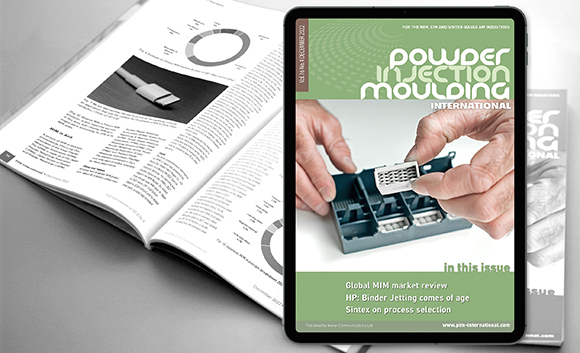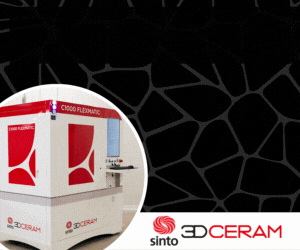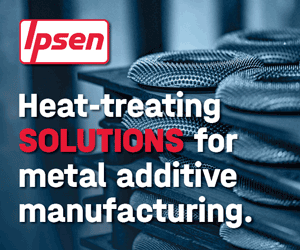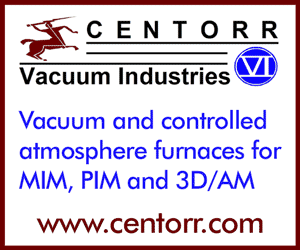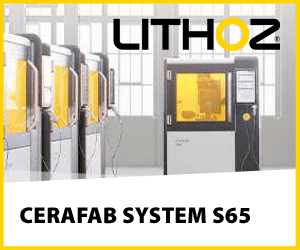PIM International, Vol. 16 No. 4 December 2022
Prefer a PDF download? Click here
The 128-page December 2022 issue of Powder Injection Moulding International (Vol. 16 No. 4) features over 40 pages of industry news, plus the following articles and technical reviews:
Global Markets for Metal Injection Moulding: Data and insight from World PM2022 and beyond
How has the global Metal Injection Moulding industry weathered the most turbulent years in recent history, and what has the impact been on MIM’s key markets worldwide? In this overview, PIM International’s Nick Williams reports on market data presented at World PM2022, the first Powder Metallurgy World Congress since the COVID pandemic, held in Lyon, France from October 9-13.
This is supplemented by other available data sources and insight from conversations with industry leaders at the event.
| Get PDF | | | Read online |
HP Metal Jet: Growing momentum and new applications as Binder Jetting comes of age
HP’s Metal Jet has undergone significant refinement in the years since it was first unveiled in 2018. Now, by incorporating nearly the whole Binder Jetting workflow in one solution, HP hopes that the Metal Jet S100 – commercially launched at IMTS 2022 and showcased at Formnext 2022 – will tempt the wider manufacturing community into the world of AM.
As Binder Jetting’s evolution moves from the intricacies of process optimisation to real application development and growth, Emily-Jo Hopson-VandenBos reports on a recent visit to HP’s Barcelona 3D Printing campus and the company’s progress and growing momentum since 2018.
| Get PDF | | | Read online |
Sintex: Exploring the full flexibility of metal powder-based processes for corrosion-resistant applications
Founded as a press and sinter PM parts maker, Denmark’s Sintex has proactivity in its DNA. Having establishing itself in this field, the company initially expanded into MIM in order to meet customer demand for more complex geometries. In recent years, to be able to meet the need for mass customisation, it has explored metal Binder Jetting.
In addition, custom alloys have been optimised for applications that require excellent corrosion resistance. Peter Kjeldsteen, Peter Valler and Poul Søgaard offer insight into the history and future of innovation within the company.
| Get PDF | | | Read online |
Tritone’s MoldJet: The definition-defying AM technology advancing steadily toward commercialisation
Tritone’s MoldJet is unique as an Additive Manufacturing process – not Binder Jetting, Material Extrusion, nor Material Jetting, the MoldJet process involves a number of steps that share features with common sinter-based AM technologies, but don’t quite fall under their definitions. But this isn’t simply a novel fringe technology: Tritone’s founders have drawn on extensive experience within Israel’s 2D and 3D printing ecosystem to build a robust AM platform that is very simple, yet highly sophisticated. Joseph Kowen visited Tritone and here reports on the MoldJet process and its potential applications.
| Get PDF | | | Read online |
The metal powder-based processing of titanium: MIM and AM-related highlights from the PMTi2022 conference
Since the very first PM Titanium conference in Brisbane, Australia, in 2011, the PMTi series has been the essential meeting point where technical and commercial advances in the powder-based production of titanium parts are discussed. Encompassing production technologies from Metal Injection Moulding to Additive Manufacturing, this year’s event was no different.
As Dr Thomas Ebel reports, the technologies involved have moved significantly towards production readiness, but with the ever-present playoff of non-negotiable performance goals against the drive to reduce cost.
| Get PDF | | | Read online |
Opening the door to MIM parts: A case study on the conversion of die cast door hinges
Die casting is a widely used process for the production of Metal Injection Moulding-sized parts, but its application is typically for components with lower strength requirements. When the mechanical performance specifications for a die cast component increase, opportunities arise for alternative processes such as MIM to step in.
In this case study, Ecrimesa’s Manuel Caballero reviews such a conversion process in which a zinc die cast hinge set is redesigned for production by MIM in 316L stainless steel in order to significantly improve mechanical properties.
| Get PDF | | | Read online |




